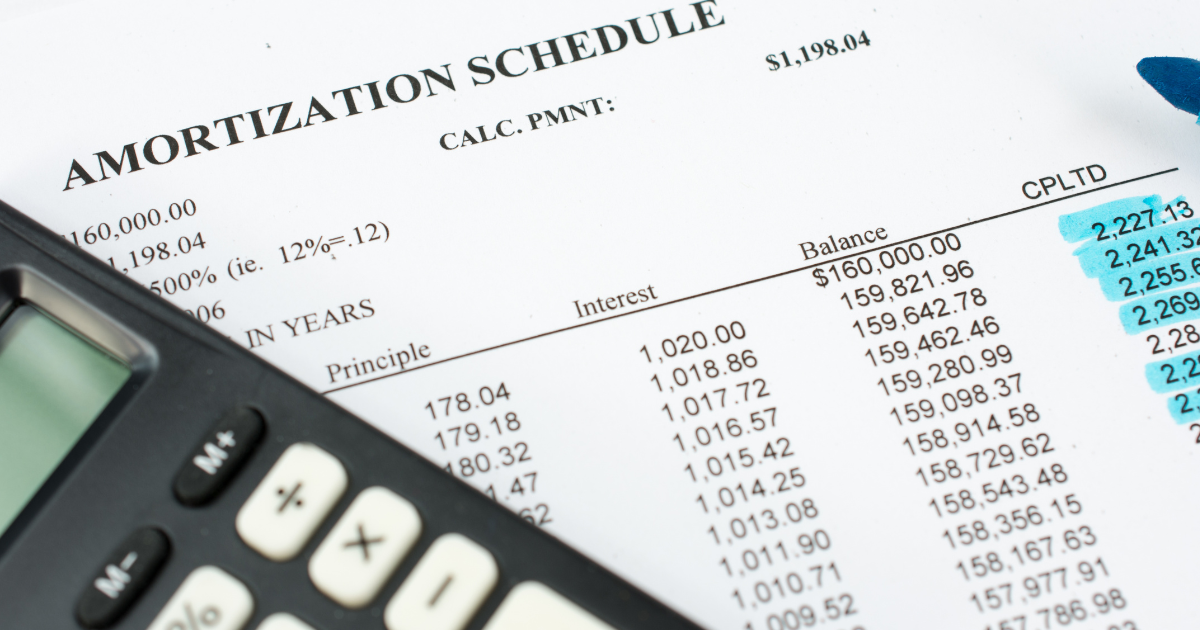When you start shopping for a mortgage, you’ll hear a lot of industry terms thrown around—one of the most important being Loan-to-Value Ratio, or LTV. While it might sound like technical jargon, LTV plays a central role in determining your loan eligibility, your interest rate, whether you'll need private mortgage insurance, and even how much house you can afford.
In this post, we’ll break down exactly what LTV is, how it’s calculated, why it matters, and what CapCenter clients need to know.
What Is Loan-to-Value Ratio?
The Loan-to-Value Ratio (LTV) is a financial term used by lenders to express the ratio of a loan to the value of an asset purchased. In the context of mortgages, it measures the size of your mortgage loan compared to the appraised value—or purchase price, whichever is lower—of the home.
LTV is calculated by dividing the loan amount by the appraised value of the home, then multiplying the result by 100 to express it as a percentage. For example, if you're purchasing a $400,000 home and making an $80,000 down payment, your loan amount would be $320,000. That gives you an LTV of 80%.
The more you put down, the lower your LTV will be. A lower LTV generally puts you in a stronger position as a borrower.
Why LTV Matters to Lenders (and You)
Lenders view the LTV ratio as a measure of risk. A lower LTV means there’s more equity in the property from the outset, reducing the lender’s potential loss if the loan defaults. This risk-based perspective influences nearly every aspect of your mortgage.
LTV affects whether you’re approved for the loan, the interest rate you’re offered, and whether you’ll be required to pay for private mortgage insurance (PMI). Lenders often have maximum LTV limits depending on the loan program. For conventional loans, that limit is typically 97%. FHA loans allow LTVs up to 96.5%, while VA and USDA loans permit 100% financing.
Borrowers with lower LTVs may also qualify for more favorable interest rates. And if your LTV exceeds 80% on a conventional loan, mortgage insurance is usually required. Some types of loans, like jumbo or investment property loans, come with stricter LTV caps.
Understanding your LTV from the beginning allows you to assess how close you are to hitting thresholds that can unlock better loan terms or eliminate added costs.
What Affects Your Loan-to-Value Ratio?
Your LTV is influenced primarily by your down payment and the value of the home. The more you contribute up front, the lower your LTV will be. That said, the property’s valuation plays a key role.
Since the ratio is based on the appraised value or the purchase price—whichever is lower—the outcome of your appraisal directly impacts your LTV. When the appraised value is less than the purchase price, the LTV is calculated based on that lower figure. This can affect your eligibility for certain loan types and trigger additional costs like mortgage insurance.
The type of loan you choose also matters. Government-backed loans like VA and USDA can allow for higher LTVs—even up to 100%—while jumbo loans and certain conventional options may require more equity.
If you’re refinancing, your LTV is based on your current loan balance compared to your home’s current appraised value. Appreciation in home value can improve your LTV, while declining values or a high remaining loan balance can push your LTV higher.
Key LTV Ranges and What They Mean
Certain LTV levels carry important implications:
- An LTV of 80% or lower is typically ideal for conventional loans, allowing you to avoid PMI and potentially access better interest rates.
- First-time buyers or those using low down payment programs may have LTVs in the 90–97% range. These are still eligible for financing but usually involve additional insurance or slightly higher rates.
- For refinances, particularly cash-out refinances, most lenders limit LTV to 80% to maintain a cushion of equity in the home.
- If your LTV is under 80%, you may qualify for better terms and avoid the added cost of mortgage insurance.
Related Terms: CLTV and HCLTV
LTV isn’t the only ratio lenders consider. When you have more than one loan secured by the same property, lenders look at the Combined Loan-to-Value Ratio (CLTV) and the Home Equity Combined Loan-to-Value Ratio (HCLTV).
CLTV includes both your first mortgage and any additional liens, such as a home equity loan or second mortgage. HCLTV takes it a step further by factoring in the full credit limit of any home equity line of credit (HELOC), regardless of whether you’ve drawn from it.
These ratios matter when considering second mortgages or refinancing. They help determine how much equity is truly available and whether you’re within the thresholds for approval.
CapCenter offers a Home Equity Loan that allows you to access the value in your home without affecting your primary mortgage rate—an attractive option for those with low LTVs and strong equity positions.
Strategies to Improve Your LTV
Improving your LTV can be done in several ways. Contributing more upfront through a larger down payment is the most direct method. You could also aim to negotiate a lower purchase price, allowing the same down payment to go further. Another approach is to consider less expensive properties, which can stretch your available funds and reduce the percentage you’re financing.
Taking extra time to save more before buying may give you the cushion needed to lower your LTV below key thresholds. For those refinancing, waiting until your home has appreciated in value can work in your favor. As property values rise, your LTV naturally drops—possibly improving your rate or removing the need for mortgage insurance.
How CapCenter Helps You Lower Your LTV
One of the most overlooked contributors to high LTV is closing costs. Traditional lenders often charge thousands in upfront fees that reduce how much of your money actually goes toward your home.
CapCenter eliminates all closing costs on both purchases and refinances. That means your entire down payment goes toward building equity—helping reduce your LTV from the start.
Imagine you’ve saved $10,000. With most lenders, part of that money would go toward fees, leaving less to apply to your loan. With CapCenter, that full amount lowers your loan balance, improving your financial position.
You can estimate how this affects your LTV and monthly payments using our Mortgage Calculator. Our team is also here to walk you through the numbers and help you get pre-approved with confidence.
Common Questions About LTV
Does a lower LTV always result in a better deal?A lower LTV can open the door to better interest rates, waive the need for mortgage insurance, and make you eligible for more flexible loan terms. But your full financial profile—credit score, income, debt—is also part of the equation.
How does LTV factor into refinancing?Your LTV determines what types of refinance loans are available. It can affect your rate, whether you need PMI, or how much cash you can take out if you're doing a cash-out refinance.
How is LTV calculated if the home appraises for less than the purchase price?Lenders use the lower of the appraised value or purchase price. If the appraisal is less than what you offered to pay, your LTV will be calculated using that lower figure, which can affect your financing terms.
Can I avoid PMI with a high LTV?In most conventional loans, no. PMI is typically required when your LTV exceeds 80%. If you’re eligible for a VA loan, however, it’s possible to avoid PMI even with no down payment.
Final Thoughts
Loan-to-Value Ratio might sound like an abstract number, but it has very real consequences for your mortgage. From determining your interest rate and loan options to shaping your monthly payment and long-term equity, LTV is one of the most important figures in home financing.
CapCenter makes it easier to put yourself in a stronger LTV position by eliminating closing costs and guiding you through the process with transparency. Whether you’re buying, refinancing, or exploring your home equity, we’re here to help you make the most of every dollar.




